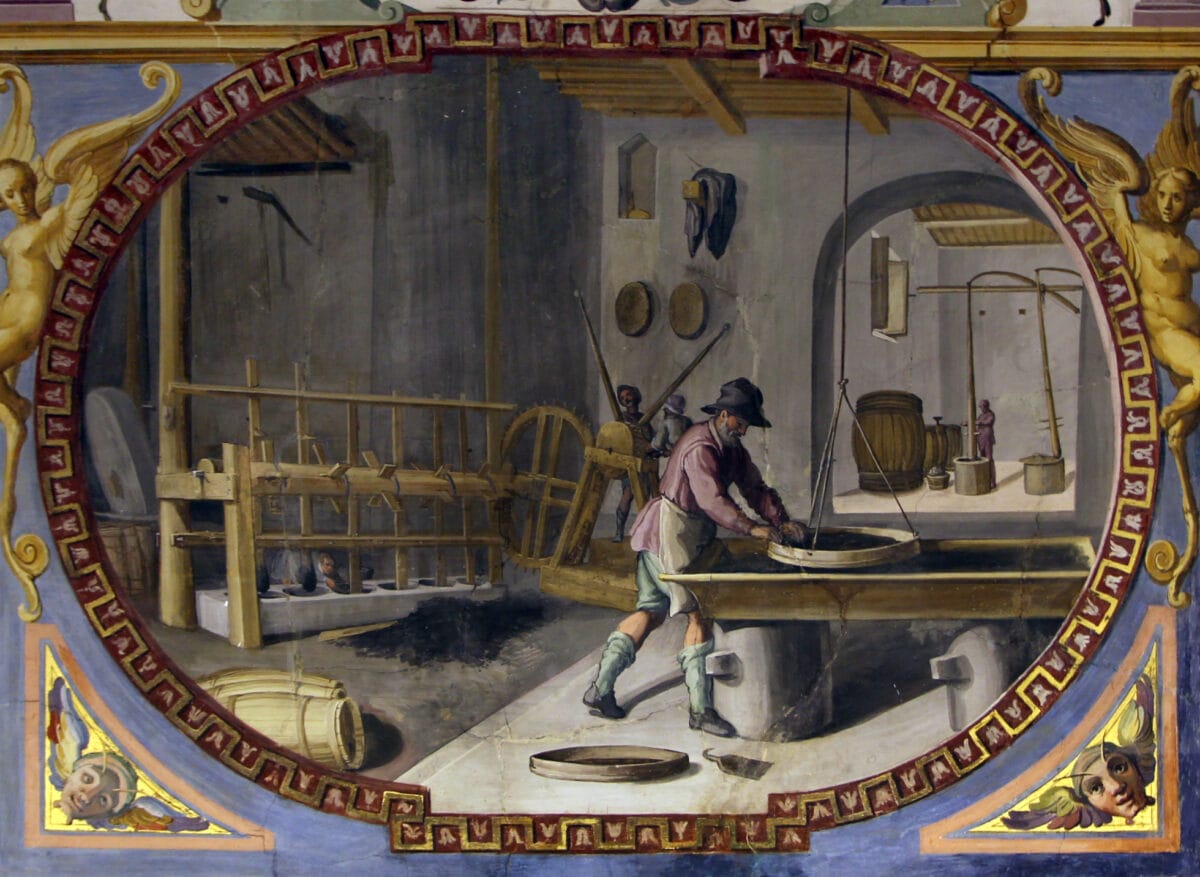Sulphur governance and state-community relations in the Duchy of Florence, 1532-1569
In this post Fabrizio Ansani of King’s College London discusses their ongoing research, supported by an EHS Carnevali Small Research Grant.
—
In Europe’s past how were relations between the state and communities shaped by extraction of critical materials, primary commodities essential to various sectors of the economy which were subject to supply risks amid rising demand, with often lacking viable substitutes? Were the economic policies adopted to facilitate procurement effective? Did these measures encounter resistance from local populations? And if so, why? These question are particularly timely, as many communities may soon face some of the most harmful consequences of top-down resource extraction policies under new strategic mining initiatives recently adopted by parliaments across the EU and in the UK.
Generously funded by an Economic History Society Carnevali Small Research Grant, my new project will examine how early modern core-periphery dynamics were transformed by state initiatives aimed at procuring a highly sought-after, location-specific strategic raw material – sulphur – that was primarily used as one of the indispensable, irreplaceable ingredients of gunpowder, along with saltpetre and charcoal. As noted by contemporary authors and prospectors Vannoccio Biringuccio and Georg Agricola, ‘the greatest quantity’ of the yellow mineral was already being consumed in making the explosive by the mid-sixteenth century, making its extraction fundamental to all the major political, economic, and social transformations of the early modern era traditionally linked to innovations in artillery technology.
The focus will be on the open-pit mines of Renaissance Tuscany, a case study largely overlooked by historians. However, my previous findings on late medieval arms procurement and raw materials diplomacy have consistently demonstrated that the region was already capable of manufacturing and exporting sulphur on a significant scale by the fifteenth century, thanks in part to the involvement of wealthy and influential merchant-bankers from Florence. Records shows that the powerful Medici Bank was able to export more than 120,000 kilograms of raw material on behalf of its associated partners and producers over a seven-year period, dispatching shipments to Valencia and La Rochelle, Rouen and Bruges, Paris and London between November 1486 and March 1493.

In particular, the project will focus on the archival records produced by peripheral officers and private individuals in the key regional hub of sulphur manufacture – namely the volcanic area distinctively known as the Valley of the Devil – between April 1532 and August 1569, during the short-lived Duchy of Florence and the last phase of the Italian Wars. The Carnevali Small Research Grant will be essential for conducting this study, as it will provide the necessary funds to access, read, and digitise a largely unexplored archival documentation that will be crucial for understanding how local administrations dealt with trade regulations and the incentive structures introduced by early modern states to secure the domestic provision of strategic commodities. One such example is the princely monopoly on iron production established by Cosimo de’ Medici in March 1542, a policy that severely impacted the mountain communities tasked with supplying firewood to blast furnaces.

Therefore, the research will be about much more than the development of sulphur industry being driven by gunpowder production. Instead, it will aim to significantly revise the relationship between power, economy, and nature in early modern Italy, exploring how the designation of a commodity as strategic influenced the behaviour of statesmen. For instance, the analysis will show how access to such resources led to improved landscape management at both central and local levels, thereby shaping state-building processes throughout the sixteenth century. By demonstrating that specific material supplies were deemed too critical to be erratically affected by market mechanisms, the study will contribute to a redefinition of state capacity. Complementing my recent findings on the economic policies of saltpetre procurement in Renaissance Italy, the project will detach state capacity from purely financial concerns to encompass the mobilisation of material resources that contemporaries regarded as ‘more important than money’.
At the same time, the investigation will examine the crucial role of peripheral administrations – and local businessmen – in supplying these highly politicized goods and reinforcing governmental intervention, while also addressing the impact of these measures on subjects and the social challenges associated with resource exploitation and territorialisation processes. By shedding new light on sixteenth-century environmental management, the study will thus aim to offer historical insights into twenty-first century global challenges surrounding resource security and sustainability in Europe.
References:
Agricola, Georg, De re metallica (Basel, 1556)
Ansani, Fabrizio, ‘A ‘magnificent’ military entrepreneur? The involvement of the Medici Bank in the arms trade (1482-1494)’, Business History 66 (2024), pp. 709-738
Ansani, Fabrizio, ‘Strategic materials and state capacity in Renaissance Italy. The economic policies of ‘Roman saltpetre’ procurement’, Economic History Review Early Access (2025), pp. 1-24
Biringuccio, Vannoccio, Pirotechnia (Venice, 1559)
Kutney, Gerald, Sulfur. History, Technology, Applications and Industry (ChemTec Publishing, 2013)
To contact the author:
Fabrizio Ansani
Department of History, King’s College London

